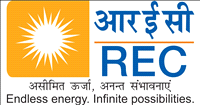Many more orbits
07 Aug 2010
The Scientific Indian: A twenty-first century guide to the world around us
Authors: APJ Abdul Kalam and YS Rajan
Publisher: Penguin Books India
Price: Rs 399
Classification: Non-fiction
 "If you ask where space begins, it is difficult to give a precise answer. Just above the surface of the Earth is the atmosphere, without which life would not exist on Earth…" And so, in simple layman’s language, begins a wonderful exposition of India’s involvement with all aspects of science and technology.
"If you ask where space begins, it is difficult to give a precise answer. Just above the surface of the Earth is the atmosphere, without which life would not exist on Earth…" And so, in simple layman’s language, begins a wonderful exposition of India’s involvement with all aspects of science and technology.
The book, as the authors tell us, is about various aspects of science and technology that will concern — or ought to concern — our nation in the 21st century. Yes, it is an academic discourse, but only of sorts. The crucial difference lies in the fact that this discourse is delivered not by academics but two men who spent the best part of their lives ensuring that India not only became a spacefaring nation but also a technologically competent military power by the close of the 20th century. That India has gained renown as a global centre for excellence in the practical application of science is attributable directly, in no small measure, to the work of people such as the authors of this book.
One of the two authors of the book also went on to become the first citizen of the country by being elected its president. The elevation of Dr APJ Abdul Kalam to the highest post in the land was indeed a tribute to his professional excellence, pioneering work and the progressive appeal of his personality.
Essentially, the book is an exposition of Dr Kalam’s thoughts on the importance of science and technology and its application in our day-to-day lives. Such is the comprehensive nature of the discourse and the clarity of his thought that the book will act as a ready reference for all those who ponder about the policies that the country ought to adopt in its approach towards science.
The book reflects the need for a national discourse on policies that will allow the nation to adopt a progressive scientific outlook. This extract from YS Rajan’s book Empowering Indians with economic, business and technology strengths for the twenty-first century actually makes the need for such a book very clear: "There are those in power (in politics, administration, military, justice or business) and those who influence decision – making (media persons, economists, opinion leaders in various fields, etc). Most of them are not well versed in any branch of science, nor do they keep up with the progress. This group of persons is crucial as their actions often determine the fate of millions of people and often the future of humanity or the world…"
Indeed, if it could be ensured that the book became compulsory reading within such circles the country would be so much the better off.
As for the book itself, the actual author, YS Rajan, also a colleague of Dr Kalam from his ISRO days, explains: "In nine chapters we have raced through various aspects of science and technology that will be of great importance to us in the 21st century, and have tried to understand, through technical knowhow and as well as through social and economic linkages, how science can be used to make life easier and better…."
Like Dr Kalam, Rajan too is an ISRO pioneer and a prominent expert in matters related to remote sensing.
In these nine chapters, divided evenly through three sections — Space, The Earth and Life — the author get his message across by adopting a unique methodology. Conscious of the fact that he is discussing matters that are highly technical and academic, Rajan presents a parallel discourse where he also explains the arcane concepts and terminologies that form the foundations of science and technology.
Even as issues of technological complexity are unraveled for us in the simplest of terms, something which only enlightened minds and genuine educators can do, the discourse happily becomes a ‘pilgrim’s progress’ for us through which we educate ourselves in the basics of scientific topics.
This unique parallel discourse deserves to be emulated by potential authors dealing with complex subject matters.
As Rajan explains, "Writing about science is not easy. Precise explanations of scientific phenomena often require the support of complicated mathematical formulas or a long tabulation of researched facts. This may be boring or intimidating for people who are not well versed in the methods of science. On the other hand, if the information provided is simplified too much, those who have studied science and want to have more advanced knowledge about newer developments might be disappointed. We have tried to strike a balance, providing as much information as possible without going into too many technicalities that a lay reader cannot relate to…."
It is a happy balance and the reader can only be grateful.
For instance, in the first section dealing with Space, even as the complexities of the atmosphere and rocket science are explained in layman terms the parallel narrative also enlightens us about the launch of the SLV-3, the rocket that finally put the Rohini satellite into orbit allowing India to join the ranks of spacefaring nations.
There are personal anecdotes as well, where insights into the pioneering work done by our scientists on science and technology are put down in deft touches for us to savour. These anecdotes are part of a unique history that will only vanish with time as the participants in this great national enterprise advance in years. Savour this:
"Most of Dr Kalam’s life has been spent in activities connected to launching into space: he always thinks in terms of space. He describes even his age as the number of orbits taken round the Sun, rather than in years. His dream of making India a spacefaring nation did not come true easily. He was close to completing forty-nine orbits around the Sun when the first successful launch of SLV-3 takes place…"
The book is also an apt rejoinder for another small community – the perennial India-baiters. Every success notched up by an ISRO or a DRDO is a personal affront to this miniscule community, whose own lack of self-esteem has driven them over the decades to run down all aspects of Indian technical and scientific achievement. Rajan touches upon their activities:
"It has also become fashionable these days to question scientific achievements, or even the need for scientific exploration. Why must India waste so much money on the Chandrayaan mission when millions of Indians in rural areas are suffering? What good will going to the moon do us? If you have a scientific bent of mind and a penchant for data, you will relish combating such anti-scientific and reactionary stances with the right statistics. How much is actually spent by the Government of India and the various state governments on rural development programmes each year? How does this figure compare to what was spent on Chandrayaan? Is it the Chandrayaan project or the nuclear deal that prevents enough resources being available for rural development? It is important to ask the questions, even if you may not have all the answers…"
At the end, Rajan pays a tribute to a number of other doyens of India’s spacefaring effort, including the renowned Prof Yash Pal. "Eighty years, what does it mean? Indeed today, after completing eighty orbits around the Sun, Prof Yash Pal is entering into the eighty-first orbit, and there are many more orbits to come…"
Indeed, after completing 60 odd years of national existence there are so many more orbits ahead of us all, in particular the country’s scientific community. For so long they have been the nation’s pride and its genuine achievers. Making full use of the opportunity that this book review provides us, we pray that its authors, and the scientific community at large, may continue to describe many more orbits around the Sun…















.jpg)













